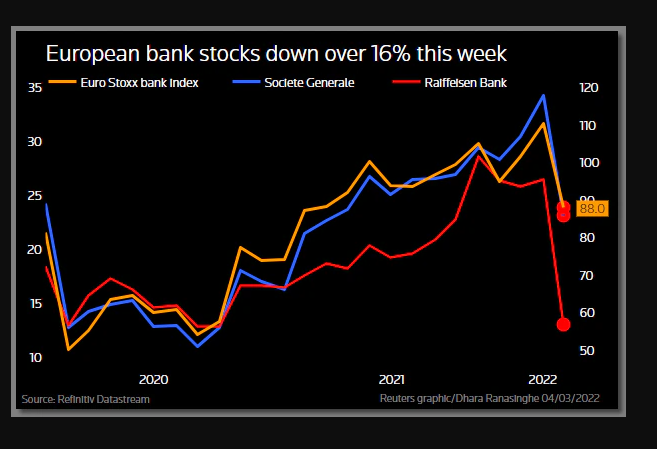The China Market And Its Impact On German Automakers: BMW, Porsche, And Beyond

Table of Contents
The Sheer Size and Growth of the Chinese Auto Market
Market Dominance and Implications
China's automotive market consistently ranks as the world's largest, presenting enormous potential for revenue and market share growth for German brands. This dominance, however, also brings intense competition from both domestic and international players. The sheer scale necessitates strategic planning and significant investment to secure a foothold and maintain competitiveness.
- Market share statistics for German brands in China: While precise figures fluctuate, German automakers consistently hold a significant, albeit decreasing, share of the luxury segment. Data from organizations like the China Passenger Car Association (CPCA) provides detailed insights into these market share trends.
- Comparison with other major global automotive markets: The Chinese market dwarfs many other major automotive markets in terms of sales volume. Comparing China's growth trajectory with that of the US, Europe, and Japan highlights its exceptional importance.
- Growth projections for the Chinese auto market in the coming years: Analysts consistently predict continued, albeit potentially slower, growth in the Chinese auto market, driven by factors like rising incomes and urbanization. Understanding these projections is critical for long-term investment decisions by German automakers.
Shifting Consumer Preferences
Chinese consumer preferences are dynamic, with a growing demand for electric vehicles (EVs), luxury SUVs, and connected car technologies. German automakers must adapt rapidly to meet these evolving demands to remain competitive. The Chinese consumer is increasingly sophisticated and technology-driven.
- Trends in EV adoption in China: China is a global leader in EV adoption, with substantial government support and a rapidly expanding charging infrastructure. This necessitates significant investment in electric vehicle technology and production by German brands.
- Popularity of specific vehicle types among Chinese consumers: SUVs, particularly luxury SUVs, enjoy high popularity in China, reflecting a shift towards larger, more spacious vehicles. This has led many German manufacturers to prioritize SUV models for the Chinese market.
- The importance of technological features in influencing purchase decisions: Chinese consumers place a high value on advanced technological features such as autonomous driving systems, connectivity, and infotainment systems. These features are becoming key differentiators in the market.
Challenges Faced by German Automakers in China
Intense Competition
The Chinese market is fiercely competitive, with established domestic brands like BYD, Geely, and Great Wall Motors, alongside other global automakers like Toyota and Tesla, vying for market share. German brands face pressure to offer competitive pricing and innovative features to stay relevant.
- Key competitors in the Chinese automotive market: Understanding the competitive landscape is essential. Analyzing the strengths and weaknesses of key competitors allows German manufacturers to develop effective counter-strategies.
- Analysis of pricing strategies employed by German automakers in China: Pricing is a crucial element of competitiveness. German brands often adopt strategies that balance premium pricing with competitive offerings to cater to different segments.
- Impact of government regulations and subsidies on competition: Government policies, including subsidies for EVs and regulations on emissions, significantly shape the competitive environment and necessitate strategic adaptations.
Navigating Regulatory Hurdles
China's automotive industry is subject to various regulations and licensing requirements, posing significant challenges for foreign automakers. Compliance is paramount, requiring substantial effort and expertise.
- Examples of key regulatory hurdles faced by German brands: These include stringent emission standards, safety regulations, and import tariffs, all of which impact production and market entry strategies.
- Strategies for compliance with Chinese regulations: Proactive engagement with regulatory bodies and investment in compliance expertise are crucial for smooth operations.
- Impact of environmental regulations on production and sales: Stringent environmental regulations push German automakers towards sustainable production practices and the development of greener vehicles.
Supply Chain and Logistics
Maintaining efficient and reliable supply chains within the vast Chinese market presents unique logistical challenges. The country's size and infrastructure complexities require careful planning.
- Challenges related to import tariffs and transportation costs: Optimizing logistics to mitigate these costs is vital for maintaining profitability.
- Strategies for optimizing supply chain management in China: This involves developing robust local supply networks and strategically locating manufacturing facilities.
- Impact of geopolitical factors on supply chain resilience: Global events can disrupt supply chains, highlighting the need for diversification and robust risk management strategies.
Strategies for Success in the Chinese Market
Localization and Customization
Adapting products and marketing strategies to suit the specific preferences of Chinese consumers is crucial. A one-size-fits-all approach rarely succeeds.
- Examples of successful localization strategies by German automakers: This includes offering specific features tailored to Chinese tastes and preferences, such as different interior designs or connectivity features.
- Importance of understanding Chinese cultural nuances: Respecting cultural norms and sensitivities is vital for effective marketing and communication.
- Tailoring vehicle features and design to meet local preferences: This could involve adapting vehicle dimensions to suit road conditions or incorporating features that enhance convenience in the local context.
Investing in Local Production and R&D
Establishing manufacturing facilities and research and development centers in China allows for greater efficiency and responsiveness to local market demands.
- Examples of German automakers with manufacturing facilities in China: Many German automakers have significant manufacturing footprints in China to benefit from local production.
- Benefits of local R&D for understanding consumer needs: Direct access to local consumers and market trends allows for informed decision-making.
- Collaboration with Chinese partners for technological advancements: Partnerships with local companies facilitate access to resources and expertise.
Leveraging Digital Marketing and E-commerce
Reaching Chinese consumers effectively requires a strong online presence and utilization of e-commerce platforms. Digital marketing is pivotal for success.
- Effectiveness of different digital marketing channels in China: Understanding the nuances of platforms like WeChat, Weibo, and Alibaba is crucial.
- The role of social media in automotive marketing in China: Social media plays a pivotal role in shaping brand perception and influencing purchase decisions.
- The importance of online sales channels for reaching consumers: E-commerce platforms are increasingly important for direct-to-consumer sales.
Conclusion
The China market presents both immense opportunities and significant challenges for German automakers like BMW and Porsche. Success hinges on a deep understanding of the Chinese consumer, agile adaptation to evolving market dynamics, and a commitment to localizing products and strategies. By navigating the complexities of this crucial market effectively, German automakers can solidify their position in the global automotive industry. To stay ahead of the curve, continuous monitoring and analysis of the China market are critical for all German automakers seeking continued success and expansion in this dynamic and vital region. Learn more about how the China market is influencing the strategies of German automakers by exploring further resources and conducting your own in-depth research on the China market.

Featured Posts
-
 The Fusion Portfolio Grows Introducing Dong Duong Hotel Hue
Apr 26, 2025
The Fusion Portfolio Grows Introducing Dong Duong Hotel Hue
Apr 26, 2025 -
 Nyt Spelling Bee February 26th 360 Hints Answers And Strategies
Apr 26, 2025
Nyt Spelling Bee February 26th 360 Hints Answers And Strategies
Apr 26, 2025 -
 Selling Sunset Star Calls Out La Landlords For Price Gouging After Fires
Apr 26, 2025
Selling Sunset Star Calls Out La Landlords For Price Gouging After Fires
Apr 26, 2025 -
 Trumps Stance On Ukraines Nato Membership A Deep Dive
Apr 26, 2025
Trumps Stance On Ukraines Nato Membership A Deep Dive
Apr 26, 2025 -
 Trumps Trade War Threat Impact On European Stock Market Strategies
Apr 26, 2025
Trumps Trade War Threat Impact On European Stock Market Strategies
Apr 26, 2025
